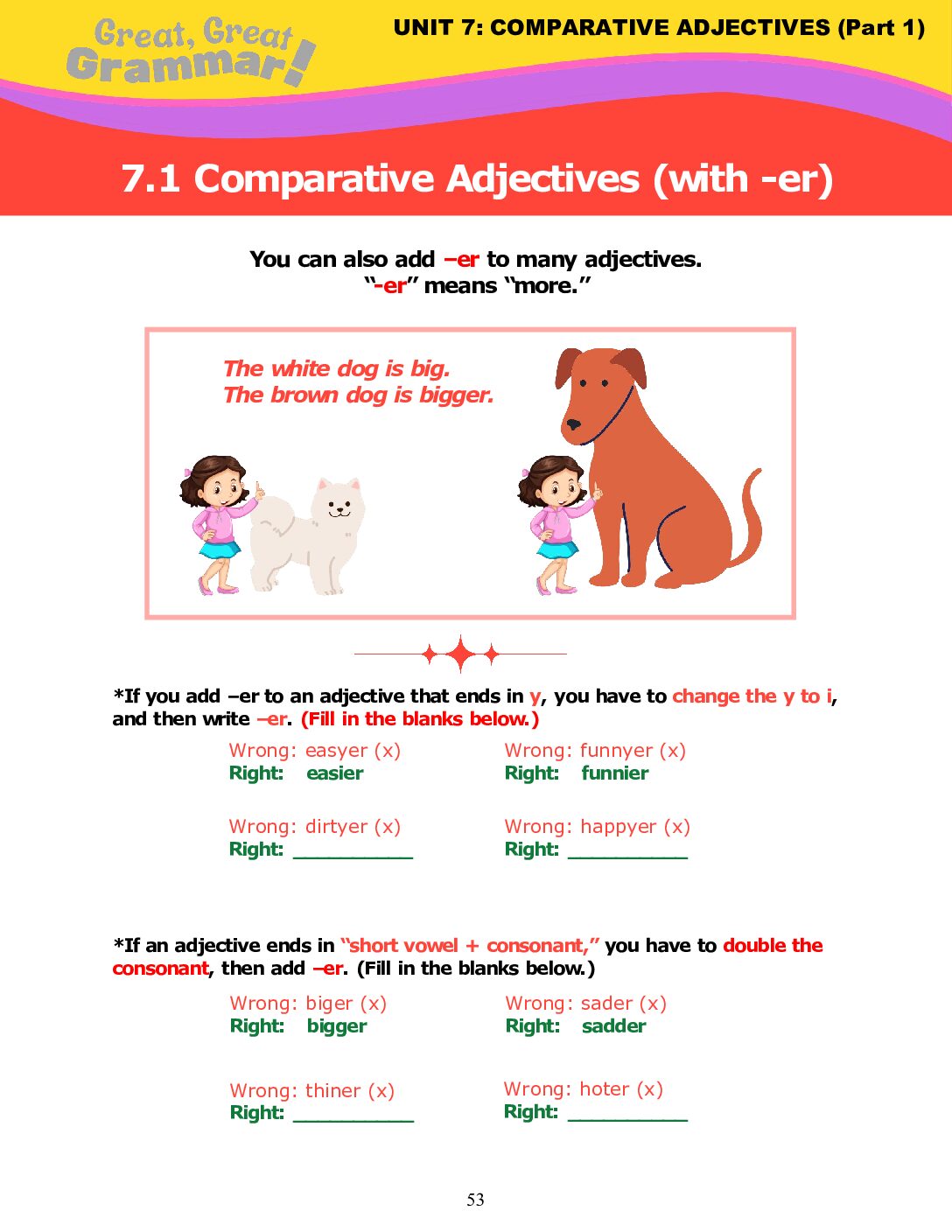In this ESL grammar exercise, students learn to add “-er” to adjectives for the purpose of comparing two things. Students learn about different spelling rules with comparative adjectives and practice writing the comparative form of various adjectives.
ESL Grammar: What are Comparative Adjectives?
Comparative adjectives are used to compare two nouns. They help us describe how one noun is different from another in terms of a particular quality. In English, many adjectives form their comparative forms by adding the suffix -er.
Examples:
- Tall becomes taller (e.g., John is taller than Mike).
- Fast becomes faster (e.g., The car is faster than the bike).
ESL Grammar: How to Form Comparative Adjectives
- Short Adjectives: Add -er to the end of the adjective.
- Tall → Taller
- Small → Smaller
- Adjectives Ending in -e: Simply add -r.
- Late → Later
- Large → Larger
- One-Syllable Adjectives Ending in a Consonant + Vowel + Consonant: Double the final consonant before adding -er.
- Big → Bigger
- Hot → Hotter
The beginner-level grammar lesson below introduces the concept of comparative adjectives (adjective + “er”) in a clear and simple manner to help young ESL learners to understand this concept. Our series of ESL grammar lessons on subjects and verbs introduce these concepts and reinforce them through helpful and instructive exercises.
This lesson is available for free download, and you can download many more English grammar lessons focusing on all different parts of speech (nouns, verbs, adjectives, adverbs and lots more!) in our comprehensive, beginner-level ESL grammar textbook Great, Great Grammar! (Book 1: Parts of Speech).

